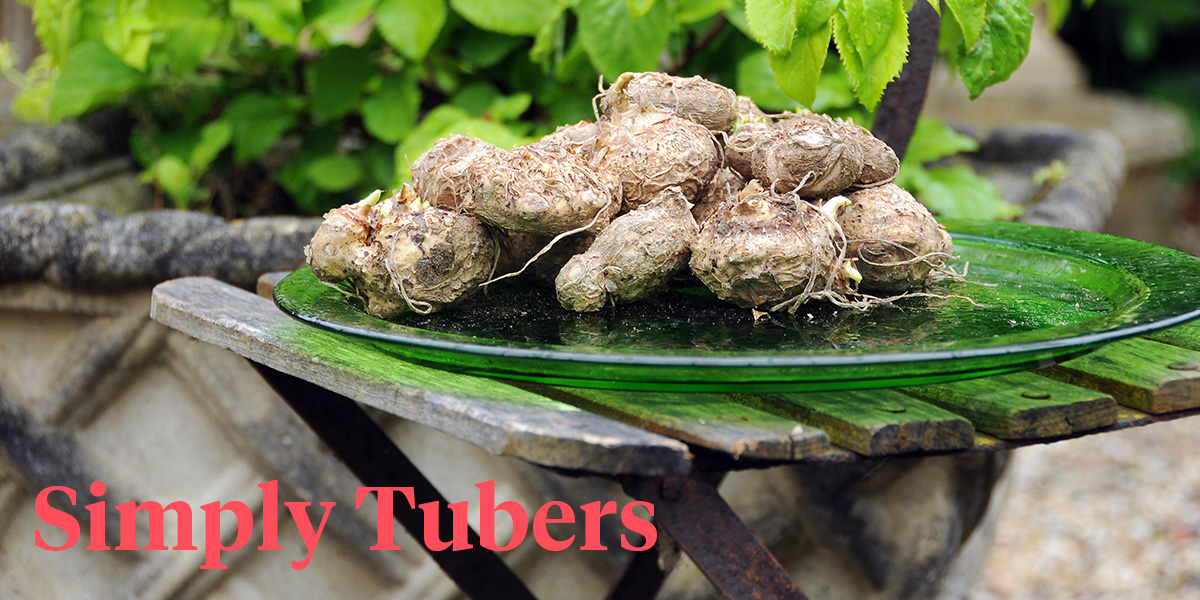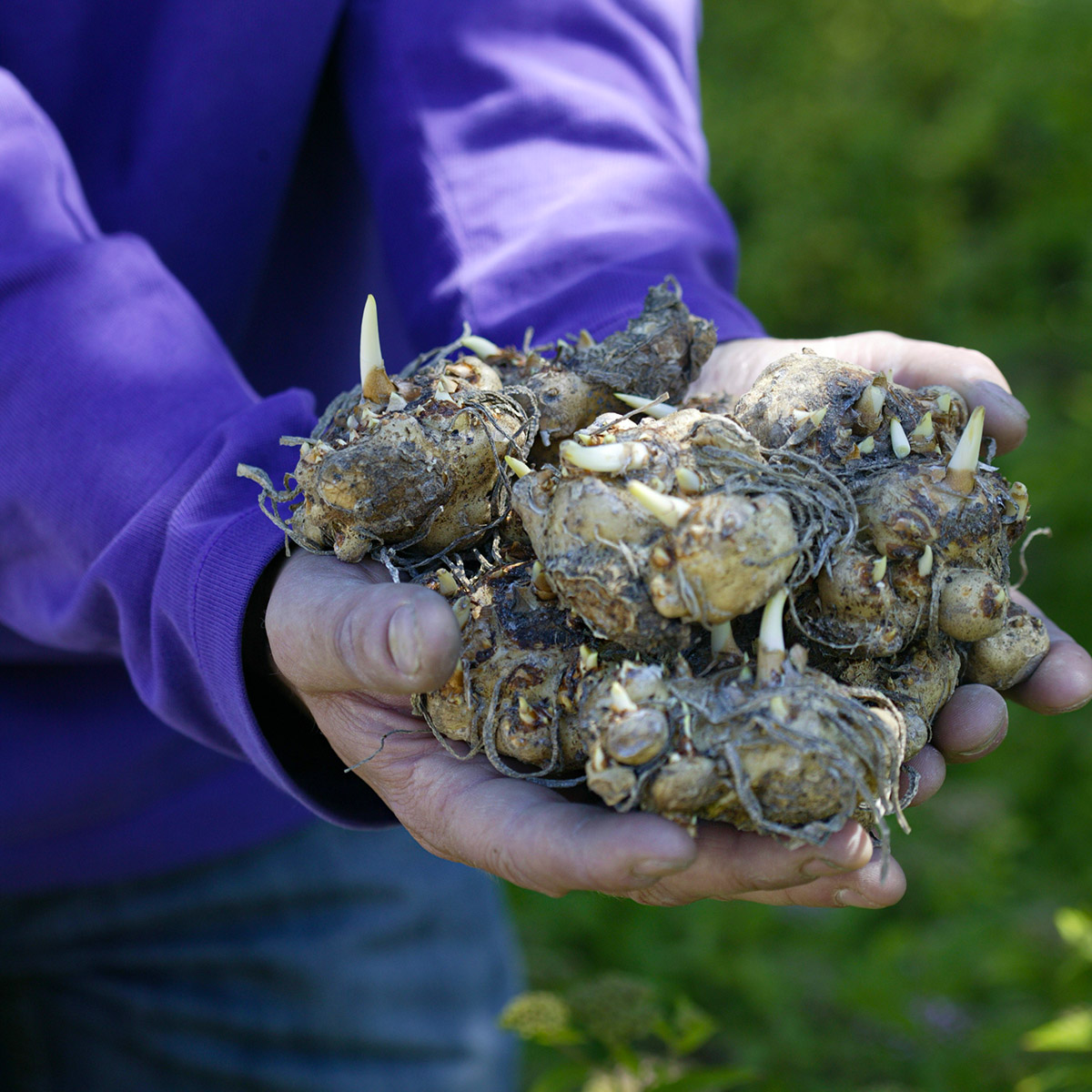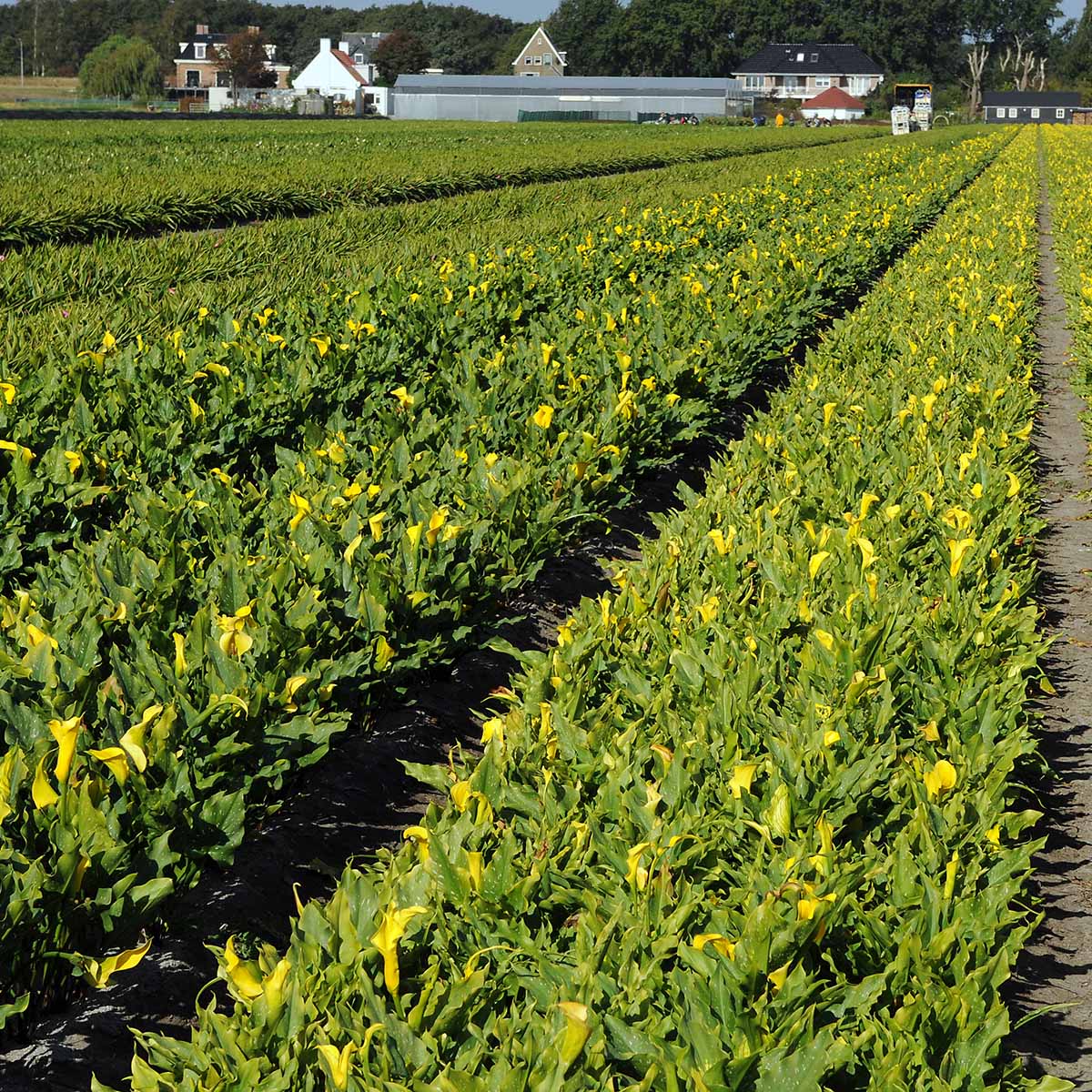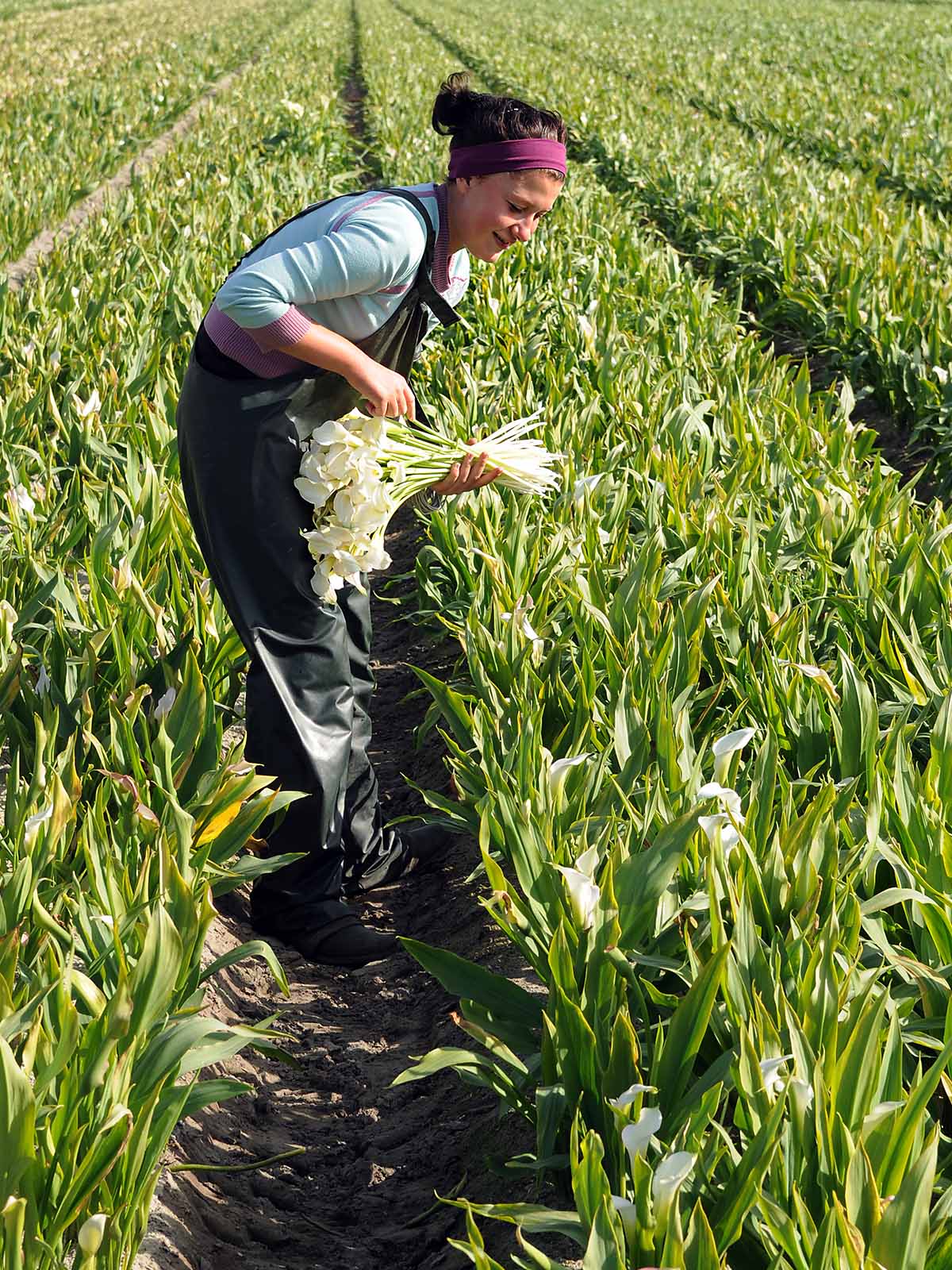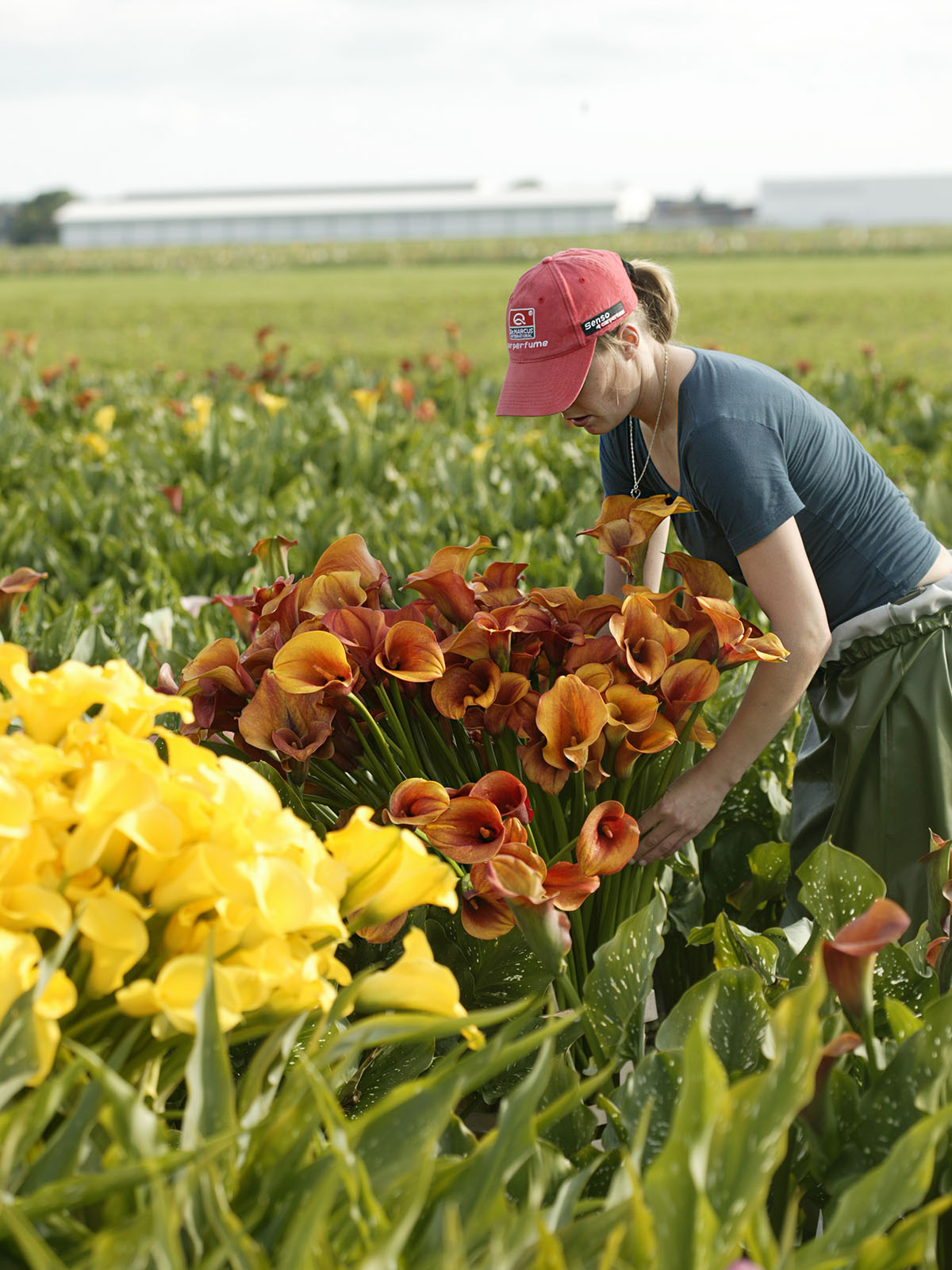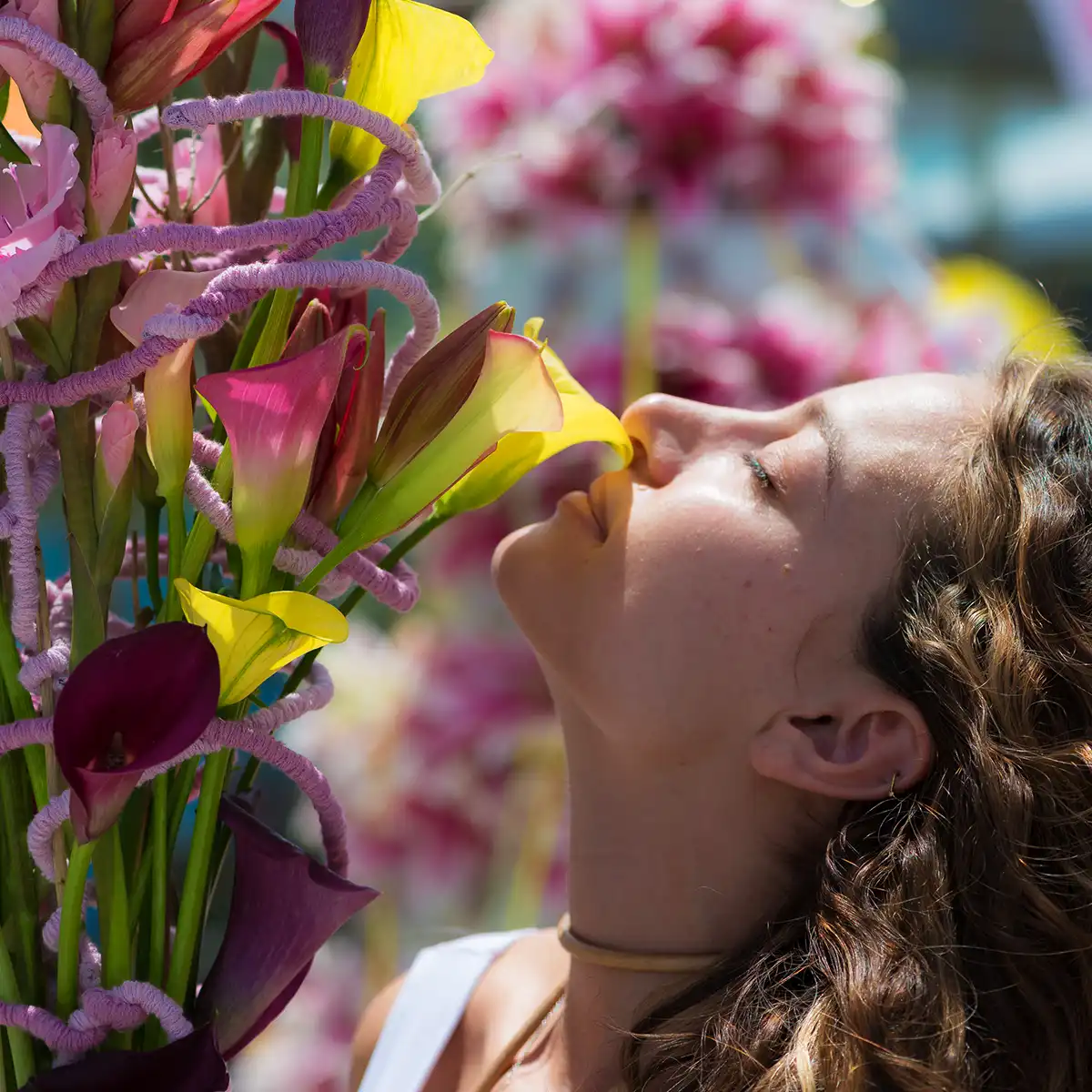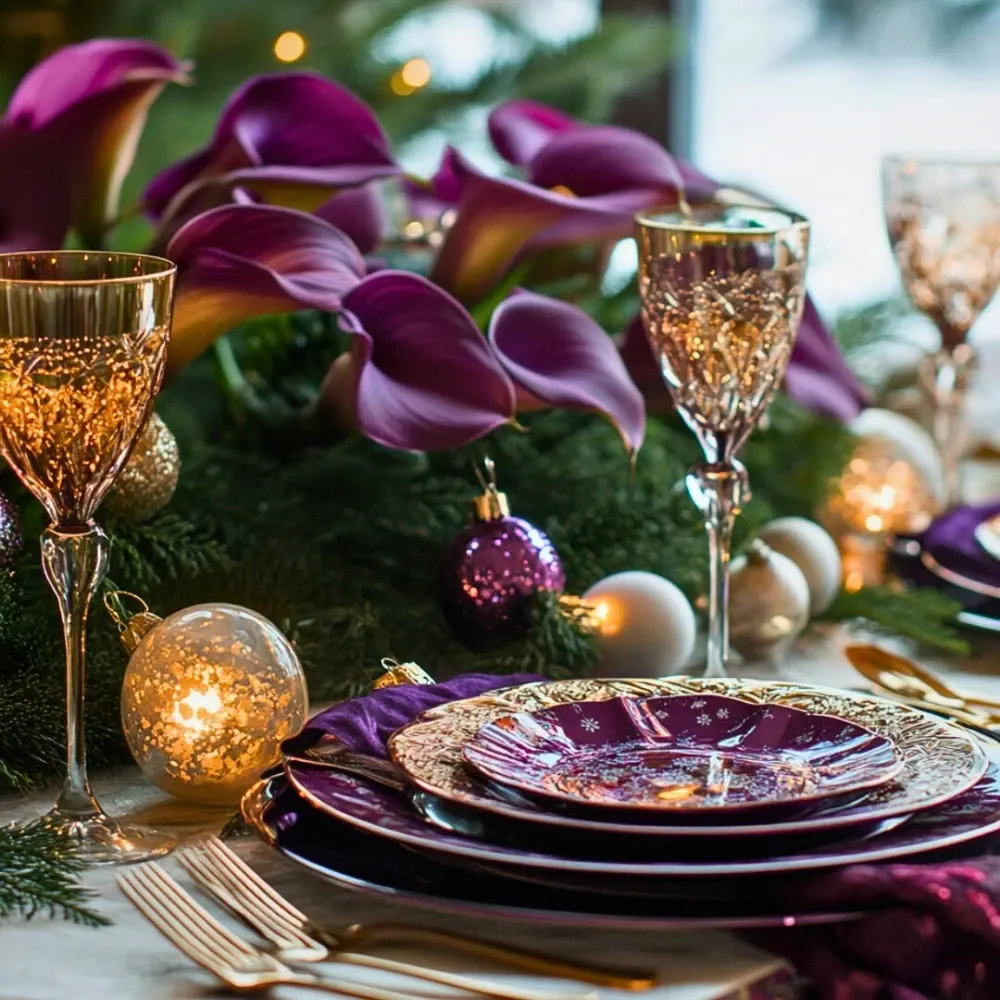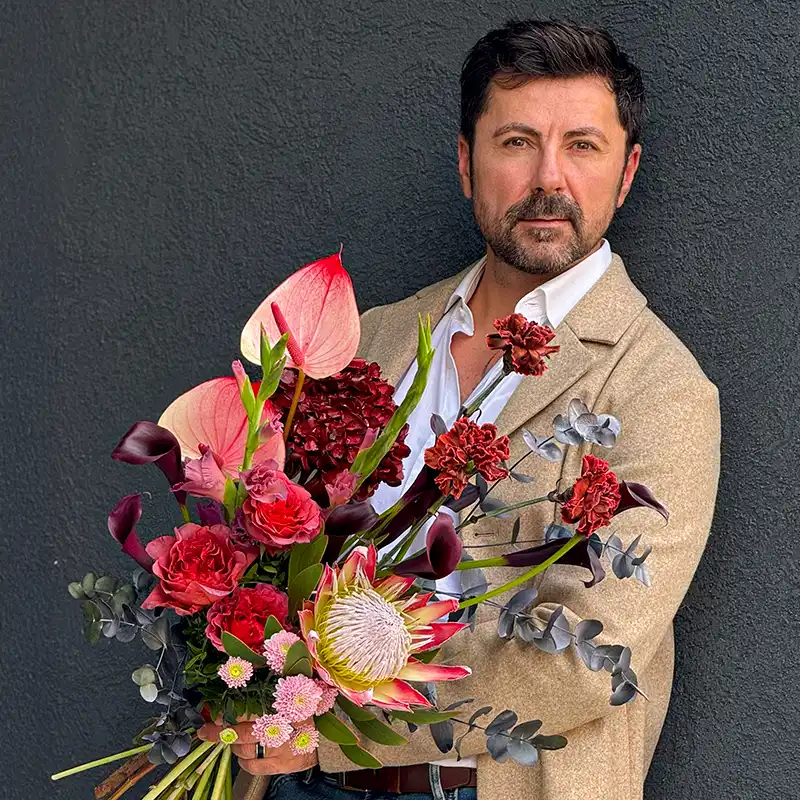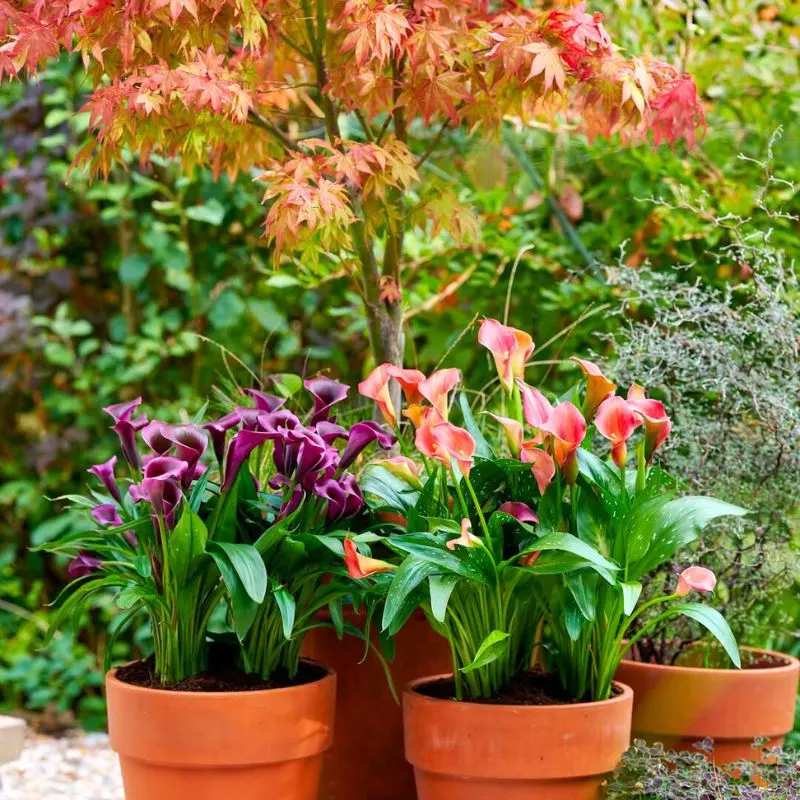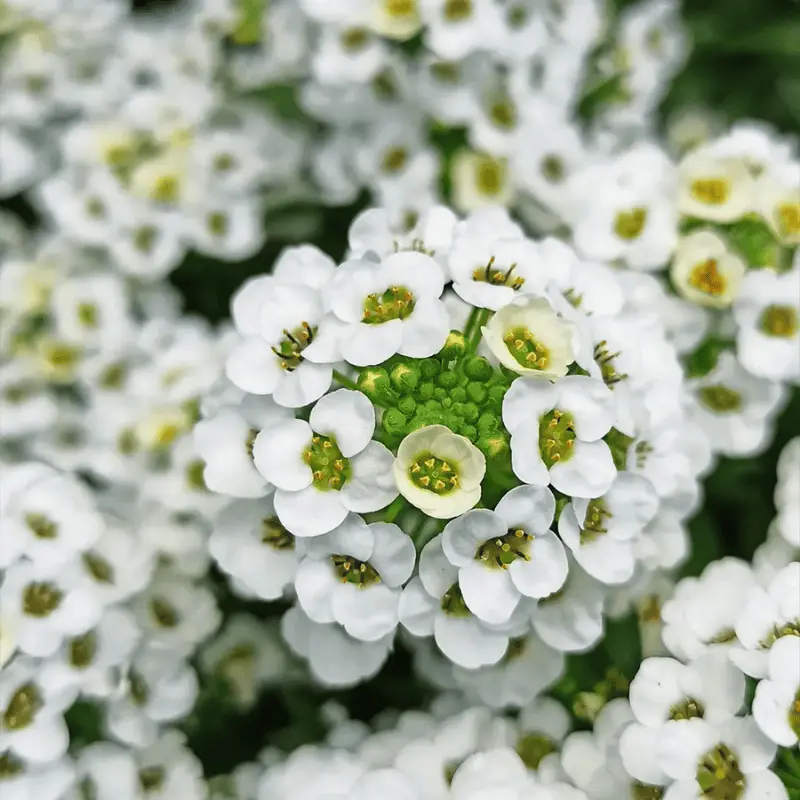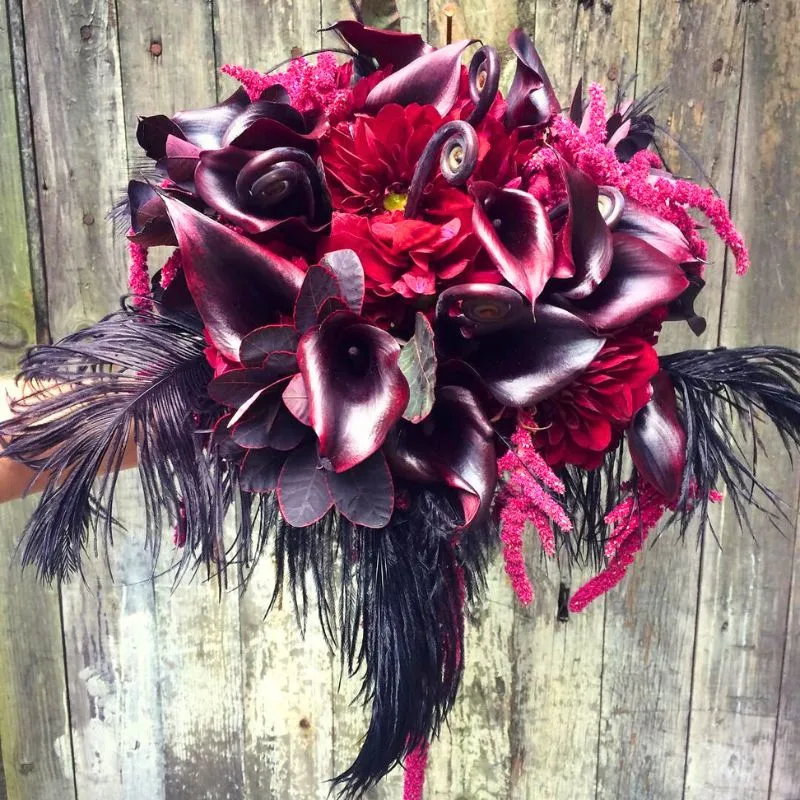Callas are romantic blooms. Maybe it’s the soft, elegant lines of the tender half cones, or maybe it’s just because a bunch of these exclusive flowers means somebody really cares about you; but there is no doubt that callas lend an air of exotic romance to the florist’s vase. But did you ever wonder where these beauts come from? Let's get back to the roots. Or better: to the tubers.
The Origin of Species
When checking the Origin of Species - in the good tradition of Charles Darwin long before us - we notice that in a flower shop the majority of all the cut flowers that you can buy are grown from seeds or roots. Cut flowers from bulbs and tubers are not rare, but they're a minority. They are special in many ways, as you are about to find out.

Unique Features of Bulbs and Tubers
Bulbs and tubers both are round, both grow underground, both are the womb of beautiful flowers.
You can plant both bulbs and tubers in the open ground. Or in a beautiful flower pot. They are unique because they contain reserve food and the beginning of a new plant or cut flower. In other words, they can reproduce. Another unique feature is that bulbs and tubers are able to go through unfavorable periods when dormant such as drought, heat, and cold, pending better conditions.
So far the similarities. But what is the distinction between a bulb and a tuber? And why is a calla a tuber? The difference between bulbs and tubers is small, the big difference is the way of food storage.
From the left: Dry calla tubers (photo by Leontine Trijber) / A field of yellow callas (photo by Wouter Koppen). Courtesy of iBulb.
The Tuber
In a tuber, the reserve food is stored in the fleshy root (root tubers) or in the stem (stem tubers). The dahlia is a root tuber while the calla is a stem tuber. During growth, the tuber is completely used up, all the reserve food is absorbed. That's why most tubers are annuals. The flower stem forms a new tuber on the old tuber and sometimes a number of small nodules. These nodules are used again as starting material (young tubers that can be grown).
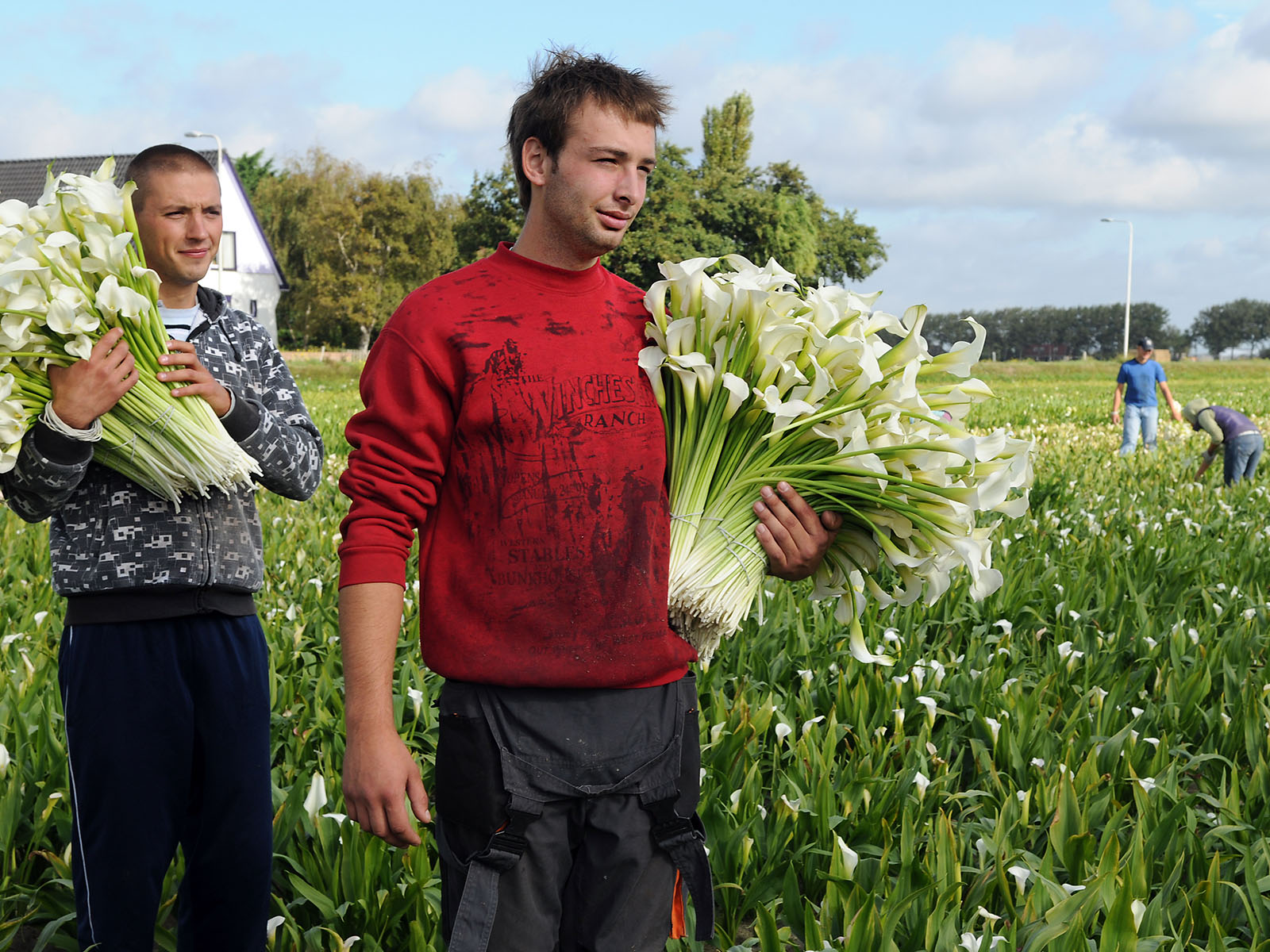
Harvesting white callas (photo by Wouter Koppen). Courtesy of iBulb.
Did You Know That Tubers Have Eyes?
Tubers have eyes, or growth nodes, from which the new plants grow. Usually, the eyes are only on the root neck at the base of the old stem. To propagate plants, all you need to do is lift the plant and cut off healthy pieces of tuber, each with about three eyes on it.
From the left: Harvesting white callas (photo by Wouter Koppen) / Harvesting orange and yellow callas (photo by Leontine Trijber). Courtesy of iBulb.
Calla Tubers - Simply Strong Throughout the Year
The calla is native to southern Africa. There, the plant often grows at the bottom of slopes between grass and shrubbery, where it can be temporarily swampy if rainwater remains. The plant stores that water in its extremely strong root tuber, so that it can still bridge the often longer drier period and bring beautiful flowers to life. The calla tuber is therefore a naturally strong quality product with a high yield in strong flowers.
The professional knowledge of the tuber growers and the intense attention they pay to their product only make the tubers even stronger. It, therefore, takes a number of years before a tuber is mature and large enough to be allowed on the market. This cycle and the desire for optimum quality offer flower and plant growers the certainty of a high yield per tuber all year round.
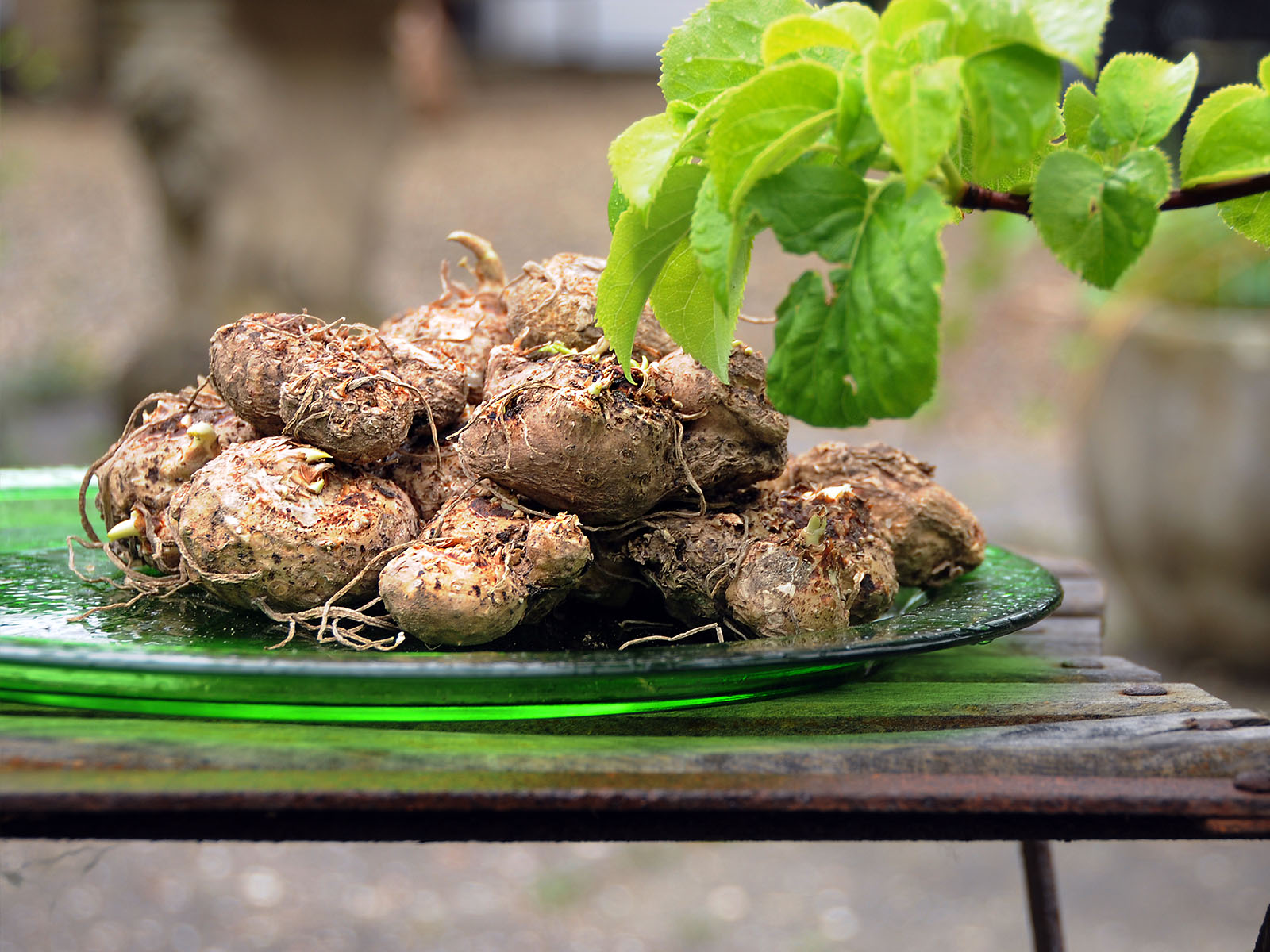
Dry calla tubers (photo by Wouter Koppen). Courtesy of iBulb.
No Bulk, Yet Simply Exclusive
So, flowers and plants from tubers are no bulk items like roses or chrysanthemums. Its exclusivity makes it, even more, enriching for the assortment of florists and garden centers due to its unique appearance. Its simplicity in style ensures harmony in a bouquet, but with its natural colors, it also provides extra cheerfulness on the plant shelf!
It is a source of inspiration for the creation of surprising combinations of callas with other special flowers and plants. The power and simplicity of the calla extra only really come into their own when combined with other flowers or plants.
More Information on Simply Calla
Want to know more about calls as a cut flower, pot plant, or tuber? The Simply Calla is your source for endless information and inspiration. The perfect starting point for growers, traders, florists, and consumers.
Header & feature images by Wouter Koppen, courtesy of iBulb.

